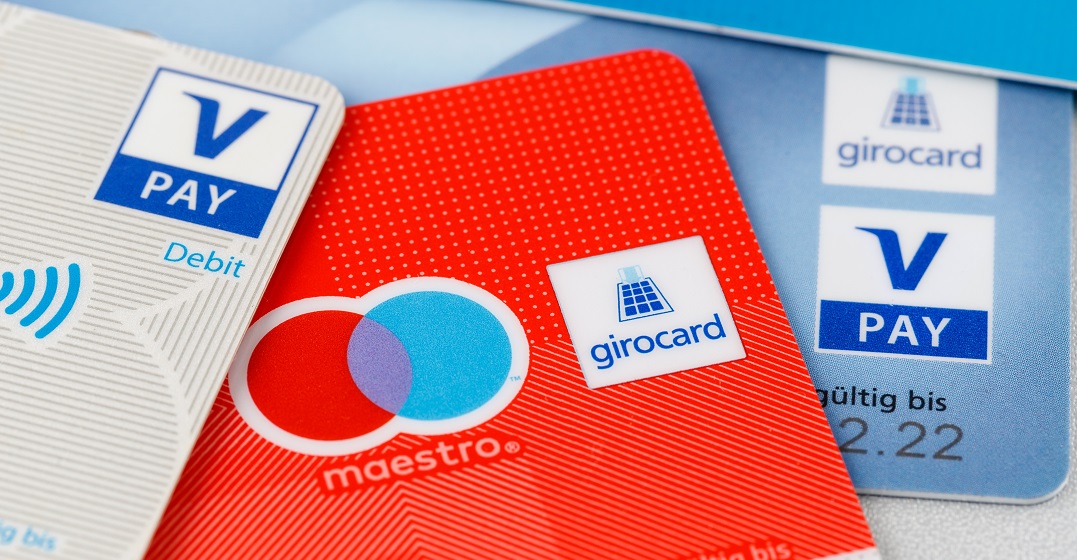Published on September 8, 2023

A beginner’s guide to the EC card (Girocard) in Germany

The EC card was initially conceived as a “Eurocheque” card that allowed customers to withdraw cash from ATMs in Germany and certain European countries. EC withdrawals from cooperating banks were free, and customers could access their funds using a four-digit personal PIN.
The modern EC card (also known as the Girocard) still works in much the same way, though it has morphed into a debit card that can also be used for cashless payments worldwide. Next to cash, the EC card is the most popular payment method in Germany. But big changes are coming for the German EC card. Learn how to get and use one while they are still available.
EC is short for “Eurocheque” or “electronic cash.” The EC card is a debit card specific to Germany. You can use it to withdraw money from ATMs or for cashless payments in shops. The card is connected to your bank account, so you can only spend what you have in your account.
This distinguishes the EC card from a credit card. Credit cards are not widely used in Germany and credit-card acceptance lags behind some other countries, which may come as a shock to many Americans. You can tell the difference between a credit card and an EC card by the logo. The latter includes the words “Maestro” or “V Pay” and should be clearly identified as an EC or Girocard. Wait a second… What is a Girocard?
The origins of the EC card date back to 1968, when it was used to guarantee the use of Eurocheques in participating countries. The card’s magnetic strip and four-digit PIN made it possible to withdraw money in participating countries.
Shortly thereafter, cashless payment at the point of sale (PoS) was introduce. Under the name “Maestro,” the EC card with EDC function became the first debit card that could be used worldwide. In 2002, the guarantee for Eurocheques was discontinued. Since 2007, the EC card has officially been called the Girokarte (Girocard), but most Germans still use the terms interchangeably.
As of July 2023, new Girocards with the old Maestro function will no longer be issued. Current cards can still be used until they expire. But in the long run, you will have to choose between a purely German Girocard or a debit card from Mastercard or Visa.
It can seem like everyone has an EC card in Germany. But how do you get one?
An EC card must be connected to a German bank account, so you’ll first need to open a bank account in Germany. To open an account and apply for an EC card, you need a valid passport or ID card. Some providers may also ask questions about income and how you plan to use the account. Many banks may also check your SCHUFA report. Good to know: Even if you have no address in Germany, you have the right to open a “basic account” (“Basiskonto”), which also comes with an EC card.
You can apply for an EC card when you open your bank account. The card itself is usually free of charge, but the conditions for accounts vary considerably depending on the provider. If you still have an account abroad, you may want to see if you can open a German account at your existing bank’s German branch (assuming they have one). Once you have decided on the best bank for you, you will sign the application forms at the nearest bank branch. Alternatively, you can also apply for an account and card at an online-only bank.
The EC card is the most popular means of payment in Germany. While many smaller stores refuse payment by credit card due to the high fees, the EC card is welcome almost everywhere cards are accepted. You can use the EC card at German ATMs, supermarket checkouts and online retailers, though you may need the V Pay function or a credit card for some worldwide transactions.
Cash is still king in Germany. For cashless payments in Germany, the Girocard is your best option. There’s even a prepaid version, which can offer better control over kids’ spending. Newer alternatives to the EC card include Apple Pay and Google Pay, as well as other payment apps such as those associated with some large supermarkets. Online transfers may also be possible.
The credit card is probably the most convenient alternative to the EC card, but it’s still not so popular in Germany. The EC card is more advantageous and can be used to withdraw money free of charge from ATMs operated by the bank itself and by cooperating banks. Due to the abolition of the Maestro function, however, changes may be coming. Mastercard and Visa debit cards may soon overtake the EC card in Germany.
The old EC card became the Girocard in 2007, though it continues to function like a debit card. If it has the Maestro function, you can use it to withdraw cash, make cashless payments or shop online. Most Germans still call their Girocard by the old name EC-Karte or Bankkarte. In the future, it will be replaced by debit cards from the major credit-card companies. Do you already have an EC card? You are nearly ready to go shopping. Just make sure to brush up your German before you start spending!